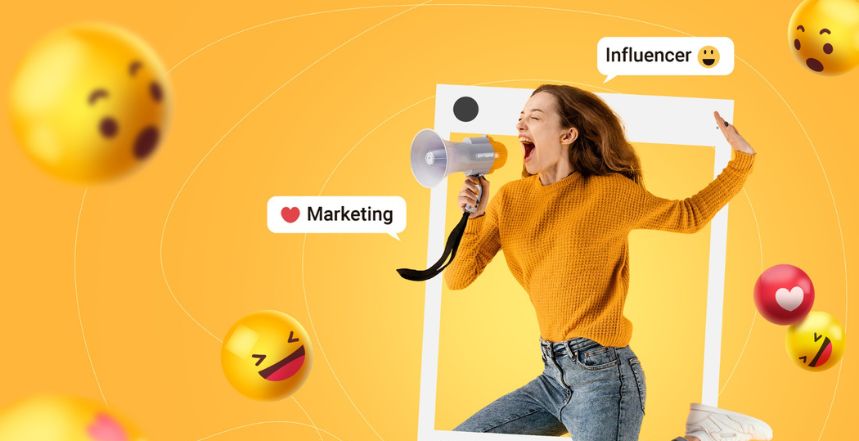How The Facebook Algorithm Works: The Four-Step Ranking Process
Barsha Bhattacharya, 2 days ago

Barsha Bhattacharya, 3 days ago

Shahnawaz, 4 days ago

Barsha Bhattacharya, 1 week ago


Advertising has always been about creating feelings. When you see a soft drink commercial, it is not just the drink they want you to notice.
On the screen, you can see an ideal picture of life: people on the beach, smiling, laughing, and living their full lives.
It seems like that drink solves everything. Nevertheless, it is emotional advertising. In the past, big brands mostly used TV and print to do it.
Today, it is everywhere, especially online. A new version of this strategy has appeared, and many people do not even realize they are being influenced.
This is Emotional Advertising. Not only do companies do it nowadays, but influencers have come on stage. Learn more about how they affect our emotions and what they can result in.
The online world offers tons of content, so brands and influencers need to stand out to sell products.
That is why they sell stories and lifestyles, which results in selling values. The product becomes a side note.
A wellness brand might not say “buy our vitamins” or “pay attention to nursing essay writing,” but instead share a video of someone waking up slowly, stretching, drinking tea, smiling, or celebrating their academic success.
You feel calm. You want that morning and that study performance. Without noticing, you also want the vitamins and those nursing essay writing services in those videos you scrolled through.
That is how modern emotional advertising works. It targets your feelings first and logic second. Emotions stay longer than facts. People might forget what was said, but they remember how the content made them feel.
Looking back, a decade ago, ads were made by professionals in marketing offices. Now, some of the most effective ads are made from people’s bedrooms.
Influencers have taken the lead in terms of emotional advertising. We see familiar faces and hear the voices of real people. They talk to the camera as if they are talking to you.
When they demonstrate a product or service, they rarely say, “buy this.” Instead, they say things like, “I have been using this every morning and it changed my routine,” or “I cried the first time I tried it.”
These stories have an impact because they feel personal and are based on a real experience. But what many people forget is that these posts are paid, elaborated, and polished. They are ads that have been paid for previously.
Not just any emotion works. Some feelings are more effective and deep than others. Happiness is the greatest example.
Posts with smiling faces, soft lighting, and kind messages make viewers feel warm, and these emotions create good connections with the brand.
However, sadness is powerful as well. You ight have come across A touching story about self-love, a journey through illness, or a memory of a hard time. Wonder why?
You see, all these posts are used to sell products, even if they feel personal. “I was struggling, and this skincare helped me feel myself again” is not just a story. It is a pitch.
Another widely used tool is nostalgia. Brands and influencers both know that memories bring up emotions.
Old songs, 90s colors, or childhood snacks are frequently used to make people feel happy, safe, or seen.
Right after provoking a feeling, they offer a product or service. It works really well, doesn’t it?

It is a common question that pops up in every consumer’s mind. The explanation is rather simple.
After watching a commercial that evokes some emotions, you put the logic in the background. Our brains remember feelings, not logical tricks.
On social media, this becomes even more widespread. We are not just watching ads. We are watching people we follow, like, and even admire.
Their posts do not look like commercials. They look like daily routines, which we like to supervise.
However, the fundamental structure remains the same: product comes second, emotion first.
It may look like someone is sharing a true story, but it has often been written with help from marketing teams.
Even the “imperfections” are sometimes planned. A messy hair bun, a tear, a laugh in the middle of a sentence – all these small touches make the post feel real.
But guess what? All these sad posts and emotional advertising are rarely real; people are designing them to sell.
Influencers also often avoid using #ad or #sponsored or hide it in small text. That way, the post feels more natural, even though the ad agencies are paying them. Brands know this.
They sometimes choose influencers not based on follower count but on how “relatable” they look.
In many cases, emotional advertising is being used to cover up the fact that the product is not that special.
A powerful story can hide a weak product, and a strong feeling can distract from low value. People rarely notice this until later.
The answer is not to stop watching or become cold or suspicious. Emotions are part of life, and stories are powerful for a reason.
But becoming aware is essential. Next time you feel moved by a post, pause and have a cold mind.
If you see that this product will improve your life, why not? In any case, making a formal decision is important.
Emotional Advertising is all around us. It is subtle, soft, and smooth. It comes with smiles and tears, with late-night thoughts and morning routines.
Moreover, it hides behind filters and friendly voices. And while it can be beautiful, it can also be manipulative.
Influencers and brands will not stop using emotions, but you can start noticing them. Once you do, the feed will look a little different.
Stories still touch your heart, but now your mind stays active too. And maybe that is what they do not want, but what you truly need.
Barsha Bhattacharya is a senior content writing executive. As a marketing enthusiast and professional for the past 4 years, writing is new to Barsha. And she is loving every bit of it. Her niches are marketing, lifestyle, wellness, travel and entertainment. Apart from writing, Barsha loves to travel, binge-watch, research conspiracy theories, Instagram and overthink.